Coast Guard: Visage of a Bygone Age

Along Atlantic Ave, nearly lost in the shade of nearby hotels, the Old Coast Guard Station Museum in Virginia Beach, Virginia, U.S. stands watch over the very same stretch of ocean as it did when it was built more than 100 years ago.
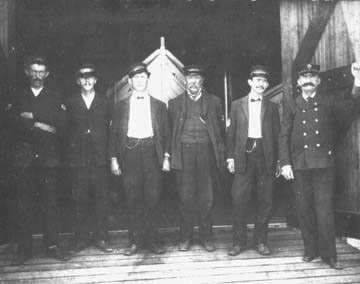 Things have changed since those early days — the Life-Saving Service was joined with the Revenue Cutter Service to form the U.S. Coast Guard in 1915, the sand dunes that covered the shore have been flattened and replaced with paved streets, horses replaced with cars and the surfmen who braved the ocean swells with muscle and oar have been replaced with motorized boats and helicopters.
Things have changed since those early days — the Life-Saving Service was joined with the Revenue Cutter Service to form the U.S. Coast Guard in 1915, the sand dunes that covered the shore have been flattened and replaced with paved streets, horses replaced with cars and the surfmen who braved the ocean swells with muscle and oar have been replaced with motorized boats and helicopters.
The Life-Saving Service, the predecessor of the modern day Coast Guard, built the station in 1903 to replace an older station. The Old Coast Guard Station was decommissioned in 1969 when new technologies made the station redundant and obsolete. Ten years later, the station was refurbished and reopened with a new lease on life as a museum.
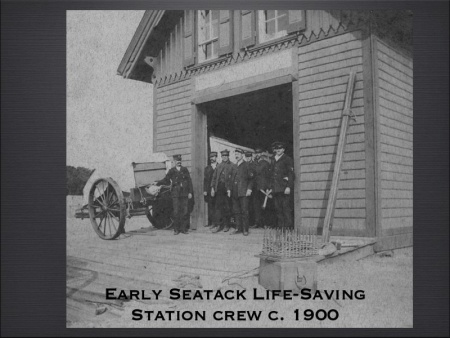 Yet, not all is quiet at the Old Coast Guard Station, guests and museum employees alike have spoken of strange occurrences within the white-walled building.
Yet, not all is quiet at the Old Coast Guard Station, guests and museum employees alike have spoken of strange occurrences within the white-walled building.
“This building, it just… things happen here that we don’t have a clear answer for,” said William Hazel, the financial administrator and store manager for the museum. “For me personally, there was definitely something I felt in the tower one day — something really cold and small on my body. It wasn’t my whole body feeling cold, just one spot on my arm.”
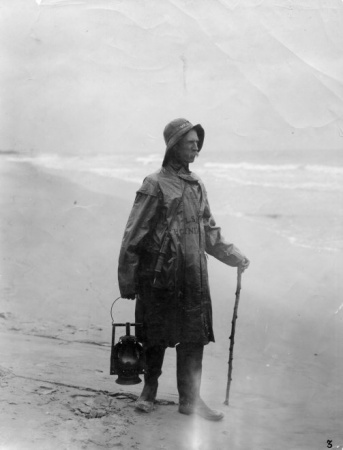 While walking through the museum’s two-floors, visitors pass by thousands of artifacts and photographs. Rescue gear, equipment, images and stories harken back to a time of brave men who braved the ocean’s might to rescue those from peril.
While walking through the museum’s two-floors, visitors pass by thousands of artifacts and photographs. Rescue gear, equipment, images and stories harken back to a time of brave men who braved the ocean’s might to rescue those from peril.
During the station’s early history, rescues were conducted quite differently than they are today. While responding to a shipwreck, the surfmen would either attempt a rescue using a Lyle gun, a cannon like device that fires a rope to distressed ships, or they would use a lifeboat, which would be either pulled to the beach by horse or pulled by the crew’s own hands.
The wrecks didn’t always happen near the station, and often, the crew would drag the carriages containing their rescue gear through miles of dunes to a scene. Lyle guns were operated from the beach and typically fired a large, 18-pound shot with heavy rope attached to a distressed boat. The surfmen endured backbreaking labor to save the lives of others, perhaps those same men are still standing the watch and walking the halls of the station today.
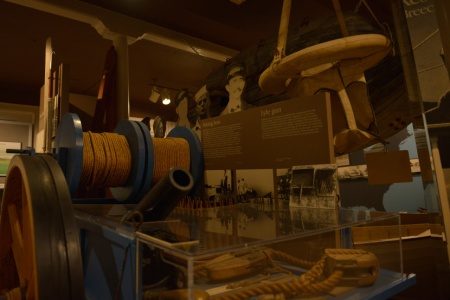 Katherine Fisher, the executive director of the Old Coast Guard Station, recounts a tale from shortly after the station was opened as a museum.
Katherine Fisher, the executive director of the Old Coast Guard Station, recounts a tale from shortly after the station was opened as a museum.
“A number of calls started going into the police about seeing people up in the [old station’s] tower,” said Fisher. “People who were out jogging in the evening or walking on the boardwalk would call the police to say someone was walking around in the museum. My predecessor got so tired of getting these calls at un-godly hours from the police department that they actually put an image of an old surfman up in the window so [the police] could just say you are just seeing an image.”
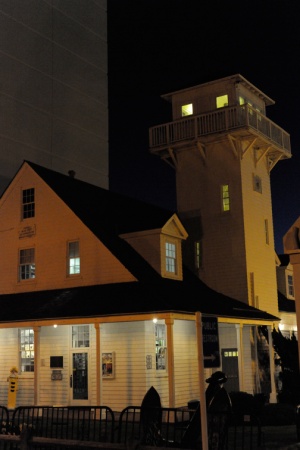 The staff had placed an image of John Woodhouse Sparrow into the tower, who may be a candidate for the late night tower sightings.
The staff had placed an image of John Woodhouse Sparrow into the tower, who may be a candidate for the late night tower sightings.
Sparrow’s career with the Life-Saving Service began in 1883, and he worked as a surfman until his retirement 33 years later. Born Sept. 13, 1855, in Virginia Beach, Sparrow’s early life is not well documented. It is believed he was a fisherman before he enlisted with the crew at the station. After joining, he married Vandalia Gornto and had seven children. Sparrow was a hard-working, dedicated lifesaver. After he retired, Sparrow lived within sight of the station, and on Jan. 25, 1935, Sparrow passed away at the age of 79.
While the station remains, the guard has been passed to a new generation of lifesavers at nearby Coast Guard Station Little Creek.
Coast Guard men and women, past, present and future, have been, and always will be, ready to answer the call of those in need. However, whether or not those brave surfmen continue to stand the watch at the Old Coast Guard Station shall remain a mystery.
Story and photos by Petty Officer 3rd Class David Weydert.
